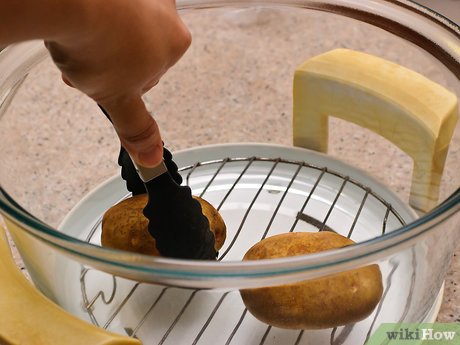Braunschweiger, one of Germany’s most prized culinary creations, is a savory and flavorful liver sausage. If you have ever tasted this delicacy, it’s likely that you’ve fallen in love with its bold taste and smooth texture. While Braunschweiger can be enjoyed cold or as a spread, cooking it can add an entirely new dimension to your meal. In this article, we’ll delve into the process of preparing and cooking Braunschweiger to perfection.
Types of Braunschweiger
Before getting into the cooking part, it’s important to understand the different types of Braunschweiger available. The primary difference between these options is the type of meat used during preparation: pork, beef, or chicken.
Pork
Pork Braunschweiger is perhaps the most popular variety available in both American and European markets. Given their tendency to provide a more robust flavor than other varieties, pork-based braunschweiger are ideal for frying or grilling.
Beef
Beef-based Braunschweigers tend to feature leaner meat than their porky counterparts. The resulting texture is still plump but not overpowering, making them perfect for sandwich spreads with vegetables like lettuce or tomatoes.
Chicken
Chicken-Based versions of this liverwurst offer an unbeatable lightness in texture without sacrificing depth in flavor notes. They’re great for those who want all the nutritional benefits of liver sausage without feeling excessive fat or grease.
Preparation
Once you have decided on your preferred type of Braunschweiger, it’s time to get started on preparation. Before deciding how you will cook it first ensure that any protective outer packaging materials – such as casing – are removed appropriately depending on how they were packaged.
To cut up evenly sized portions for cooking later on utilizing cutting tools like a chef’s knife or kitchen scissors by lightly scoring around each slice so that they are separated efficiently without causing damage to the sausage’s texture or flavor.
Cooking Methods
With the preparation part completed, it’s time to start cooking. There are several ways to cook Braunschweiger, including pan-frying, grilling, and baking. For each method, you will need some basic tools like spatulas and pans.
Pan-frying
Pan-frying is one of my favorite ways to cook Braunschweiger because it doesn’t require a lot of effort or equipment. All you need is a small amount of olive oil or butter in a frying pan over high heat until it sizzles slightly before adding in slices of Braunschweiger. After about two minutes when their edges have become crispy but not hardened, flip them once so that they’re browned on both sides.
The key here is to make sure that all sides receive even heat by rotating them instead of leaving one side down throughout the whole cooking process—a great trick for maintaining moistness levels while still achieving a crispier texture.
Grilling
Another option for cooking Braunschweiger is on the grill. When grilling, it’s best to use an electric grill rather than acidic charcoal grills as liver sausage is prone to sticking when exposed strongly to heat from coals.
To begin, marinate juicy pork or beef-based types with flavors ranging from sweet Korean-Style spice rubs or traditional German mustard sauces overnight for optimal results; this helps make grilling more successful and prevents dryness during cooking.
Afterward, place your beautifully marinated sausages onto a preheated grill after brushing lightly with olive oil for proper heat distribution. Grill at medium-high temperature until crispy on all sides while spinning them frequently for even charcoals sizzling flavors.
Baking
If you’re short on time or want another easy option aside from frying sausage discs individually by themselves without condiments/drinks every serving; then baking may be your go-to cooking method.
For baked Braunschweiger, preheat your oven to 350°F and place chopped slices in a baking dish. Keep them evenly spaced apart and bake for about 20-25 minutes until sides are crispy and browned, turning the sausage once its edges have become brown to avoid uneven browning.
Remember to monitor the temperature while cooking as overcooking can lead to dehydration affecting the flavor profile. Test doneness by looking if they have reached an internal temperature of about 160°F or gently touching the meat so you feel that it’s no longer squishy instead firm.
It is also possible to combine multiple methods for a more complex flavor profile experience, for instance combining Baking with Grilling or frying in-between some grilling sessions.
Serving Ideas
Once cooked, there are plenty of ways to serve Braunschweiger. For those who love sandwiches, swap out regular cold cuts like ham or turkey with these unique Liverwurst slices that come in different textures and savory tastes from crisp and light chicken-based flavors to heavier pork-based seasonings.
Additionally, braunschweiger works well as a breakfast component paired with other breakfast items such toast, eggs and sauteed vegetables. For those days where you just want something hearty as comfort food; pair with Stew made from beef broth or hot dogs flavored at-least somewhat similar through using mustard mayonnaise sauce etc making an affordable meal without sacrificing nutritional value!
Finally, when enjoying this traditional German dish make sure not skimping on beverages too. Depending on how spicy or richly flavored your breaded liver sausage is brewed beverages ranging from pale ale beers strengthen flavors further while refreshing sweet/sour fruity cocktails mellow them down.
Conclusion
In conclusion of this article providing insights into how breaded liver sausage called ‘Braunschweiger’ is traditionally cooked effectively; we’ve delved into popular recipes that can be used to prepare your much-loved Liverwurst. Whether you prefer baking, grilling, or pan-frying Braunschweiger, knowing various cooking techniques will give you an opportunity to experiment with unique flavors and textures.
By following the guidelines we’ve outlined here- from understanding the types of Braunschweiger to choosing an ideal recipe for cooking it- you’ll be on your way for a delicious experience in no time. So don’t hesitate to try these fantastic German sausages today, and embrace the culinary journey that awaits!
Q&A
- Q: What is Braunschweiger? A: Braunschweiger, also known as liverwurst, is a German-style smoked sausage made of pork liver, pork meat and spices.
- Q: How do I prepare Braunschweiger for cooking? A: Remove the casing from the Braunschweiger and slice it into 1/4-inch thick pieces.
- Q: What are some popular ways to cook Braunschweiger? A: Some popular ways to cook Braunschweiger include frying in a pan, baking in the oven, or grilling on a BBQ.
- Q: Can Braunschweiger be eaten cold or does it need to be cooked? A: Yes, Braunschweiger can be eaten cold and sliced as a lunch meat for sandwiches or crackers; however, it is also delicious when heated up and served hot as an appetizer or breakfast dish.





